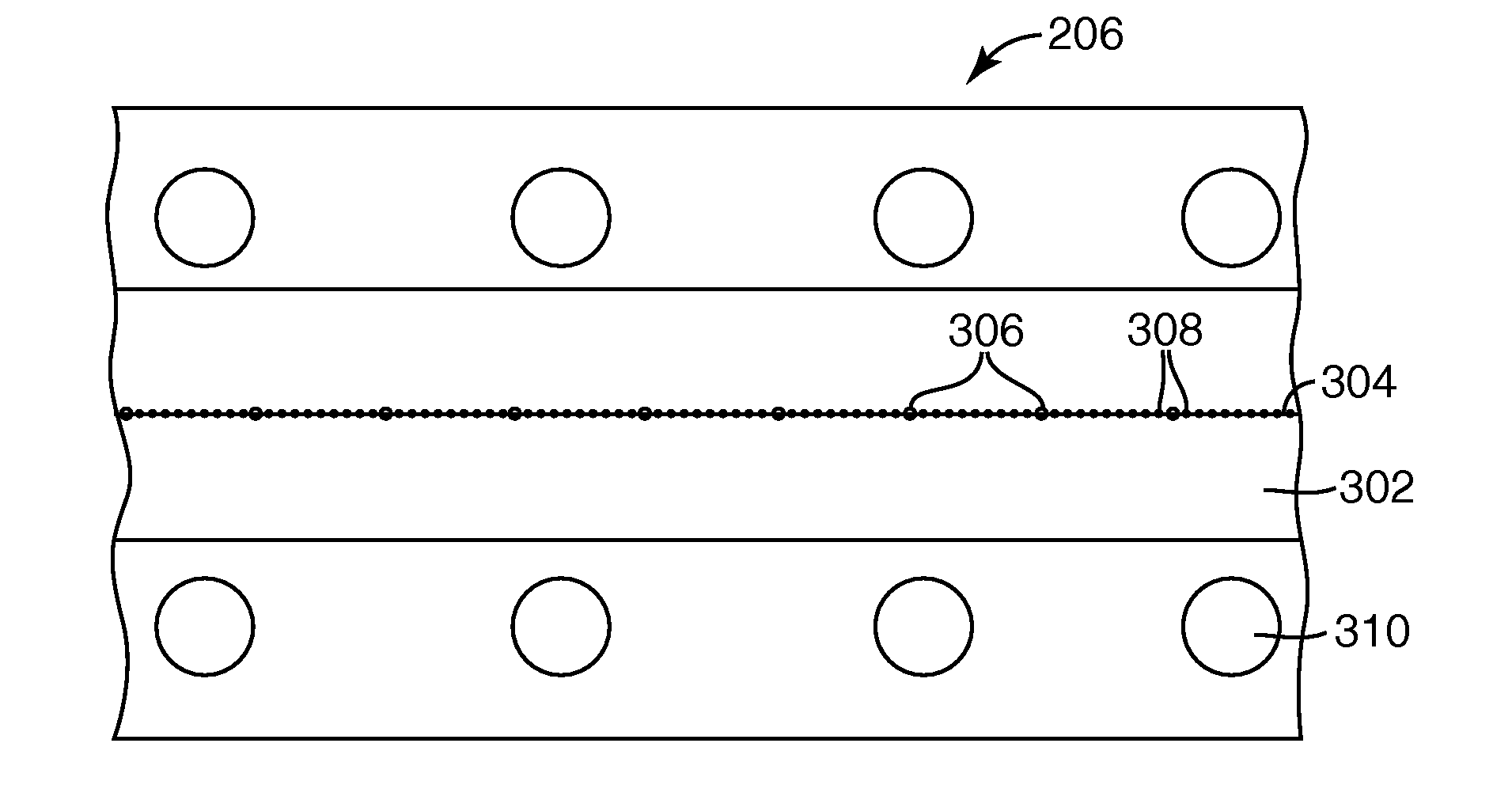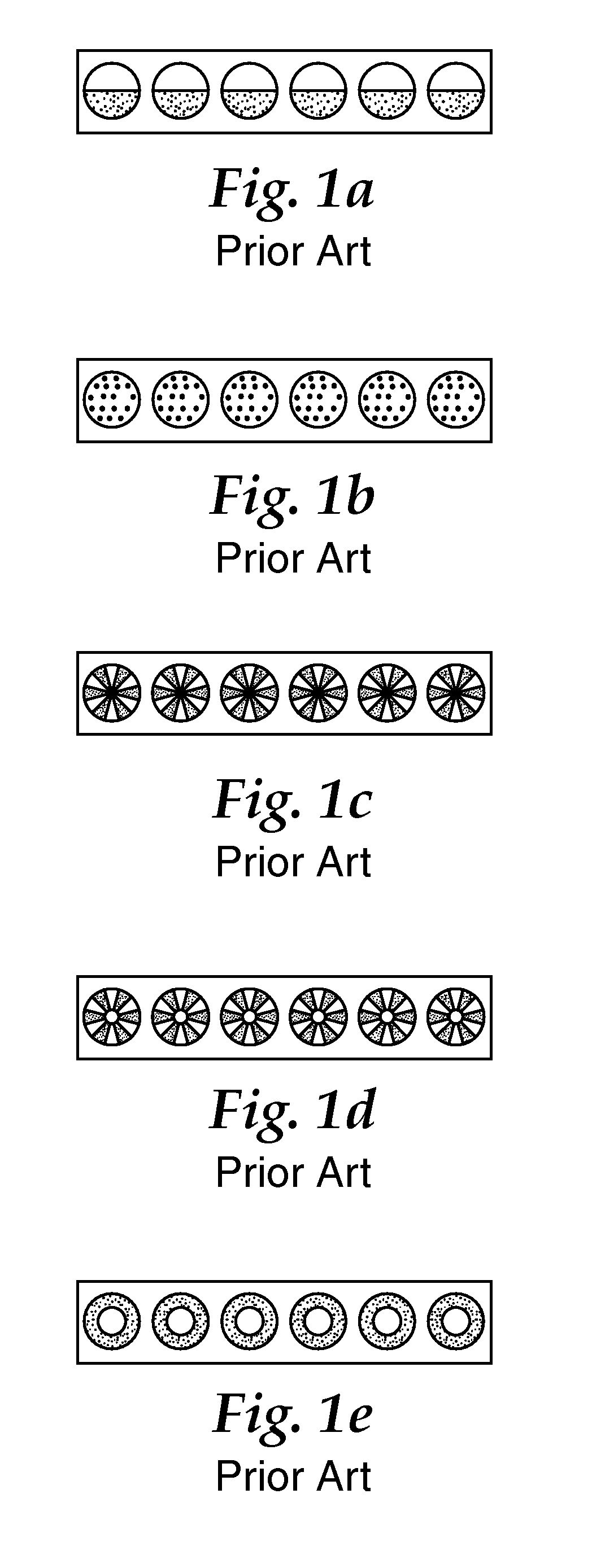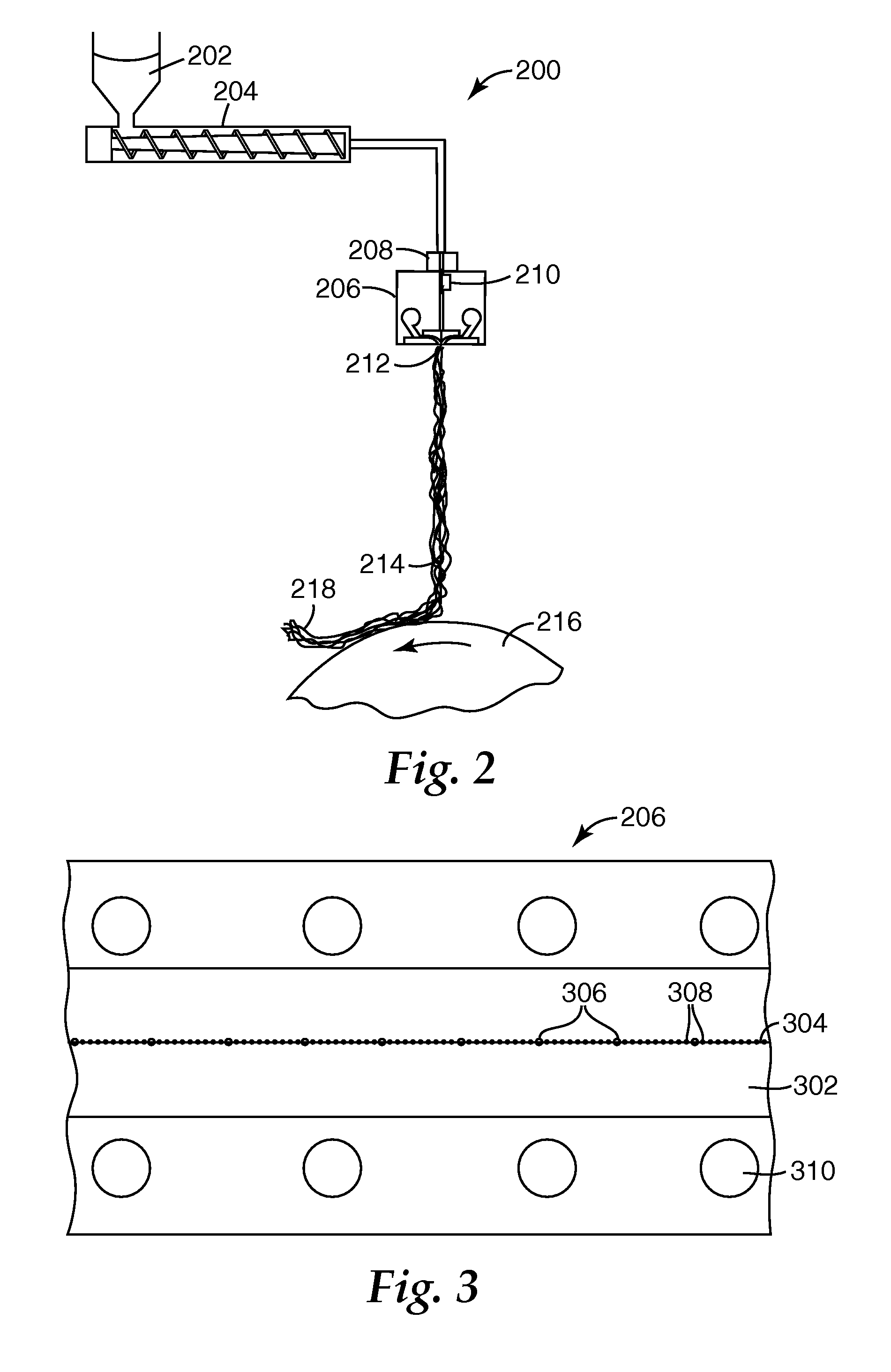Monocomponent monolayer meltblown web and meltblowing apparatus
a monolayer, meltblowing technology, applied in the direction of filtration separation, separation processes, instruments, etc., can solve the problems of limiting the extent to which unused portions may be placed on the web, adding cost and complexity, and two extruders, etc., to improve the stiffness, improve the moldability, and increase the fiber surface area
- Summary
- Abstract
- Description
- Claims
- Application Information
AI Technical Summary
Benefits of technology
Problems solved by technology
Method used
Image
Examples
example 1
[0066]Using an apparatus like that shown in FIG. 2 and FIG. 3 and procedures like those described in Wente, Van A. “superfine Thermoplastic Fiber”, Industrial and Engineering Chemistry, vol. 48. No. 8, 1956, pp 1342-1346 and Naval Research Laboratory Report 111437, Apr. 15, 1954, four monocomponent monolayer meltblown webs were formed from TOTAL™ 3960 350 melt flow rate polypropylene available from Total Petrochemicals to which had been added 1% tristearyl melamine as an electret charging additive. The polymer was fed to a Model 20 DAVIS STANDARD™ 2 in. (50.8 mm) single screw extruder from the Davis Standard Division of Crompton & Knowles Corp. The extruder had a 20 / 1 length / diameter ratio and a 3 / 1 compression ratio. A Zenith 10 cc / rev melt pump metered the flow of polymer to a 10 in. (25.4 cm) wide drilled orifice meltblowing die whose original 0.012 in. (0.3 mm) orifices had been modified by drilling out every 21st orifice to 0.025 in. (0.6 mm), thereby providing a 20:1 ratio of ...
example 2
[0071]Using the general method of Example 1, webs were made from 100% TOTAL 3960 polypropylene and then 1) corona charged or 2) corona and hydrocharged with distilled water. Set out below in Table 2A are the Run Number, charging technique, basis weight, EFD, web thickness, initial pressure drop, initial NaCl penetration and Quality Factor QF for each web.
[0072]
TABLE 2AQualityBasisPressureFactor,RunChargingWt.,EFD,Thickness,Drop, mmInitial1 / mmNo.TechniquegsmμmmmH2OPenetration, %H2O2-1FCorona23714.23.236.7032.40.172-2FCorona / 23714.23.236.7713.20.30Hydrocharged2-3FCorona19713.32.825.7328.70.222-4FCorona / 19713.32.825.936.30.47Hydrocharged
[0073]The Table 2A webs were next molded using the method of Example 1 to form cup-shaped molded matrices for use as personal respirators. Set out below in Table 2B are the Run Number, King Stiffness, initial pressure drop, and initial NaCl penetration for the molded matrices.
[0074]
TABLE 2BPressureKingDrop, mmInitialRun No.Stiffness, NH2OPenetration, %2...
example 3
[0076]Using the method of Example 1, webs were made from TOTAL 3960 polypropylene to which had been added 0.8% CHIMASSORB 944 hindered amine light stabilizer from Ciba Specialty Chemicals as an electret charging additive and then hydrocharged with distilled water. Set out below in Table 3A are the Run Number, basis weight, EFD, web thickness, initial pressure drop, initial NaCl penetration and Quality Factor QF for each web.
[0077]
TABLE 3AQualityBasisPressureFactor,RunWt.,EFD,Thickness,Drop, mmInitial1 / mmNo.gsmμmmmH2OPenetration, %H2O3-1F24617.92.954.270.8111.133-2F203182.413.372.0901.15
[0078]The Table 3A webs were next molded using the method of Example 1 to form cup-shaped molded matrices for use as personal respirators. Set out below in Table 3B are the Run Number, King Stiffness, initial pressure drop, and initial NaCl penetration for the molded matrices.
[0079]
TABLE 3BPressureKingDrop, mmInitialRun No.Stiffness, NH2OPenetration, %3-1M2.895.300.5913-2M1.963.901.064
[0080]The data i...
PUM
| Property | Measurement | Unit |
|---|---|---|
| size | aaaaa | aaaaa |
| height | aaaaa | aaaaa |
| height | aaaaa | aaaaa |
Abstract
Description
Claims
Application Information
 Login to View More
Login to View More - R&D
- Intellectual Property
- Life Sciences
- Materials
- Tech Scout
- Unparalleled Data Quality
- Higher Quality Content
- 60% Fewer Hallucinations
Browse by: Latest US Patents, China's latest patents, Technical Efficacy Thesaurus, Application Domain, Technology Topic, Popular Technical Reports.
© 2025 PatSnap. All rights reserved.Legal|Privacy policy|Modern Slavery Act Transparency Statement|Sitemap|About US| Contact US: help@patsnap.com



